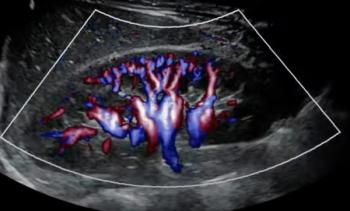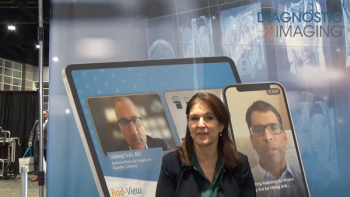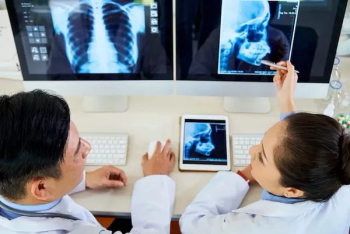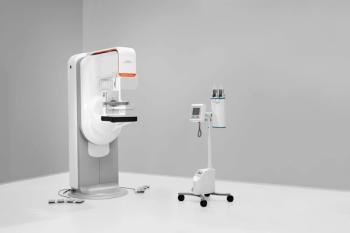
New MR regulations spur industry backlash, lobbying effort
European radiology staff, medical imaging researchers, and manufacturers are being urged to lobby against regulations that will restrict the operation of MR scanners. Speakers at the European Congress of Radiology expressed concerns that the limits, to be imposed in all European Union member states by April 2008, have no scientific basis and could bring greater risks to patients.
European radiology staff, medical imaging researchers, and manufacturers are being urged to lobby against regulations that will restrict the operation of MR scanners. Speakers at the European Congress of Radiology expressed concerns that the limits, to be imposed in all European Union member states by April 2008, have no scientific basis and could bring greater risks to patients.
The use of MR scanners, for both clinical examinations and research, is already governed by a raft of widely accepted international regulations and national laws. But the proposed new limits for MR workers are unnecessarily cautious, according to Hans Engels, Ph.D., MR safety director for Philips Medical Systems.
The static field from MR scanners is known to cause transient effects such as vertigo and headaches, though no long-term effects have been identified. Restrictions on gradient fields are designed to prevent painful muscle stimulation, though again, evidence on long-term harm from overexposure is lacking. Because current radiofrequency safety limits prevent local heating, which can cause burns, MR workers would rarely, if ever, be exposed to sufficiently high RF fields to be at risk of tissue damage.
Directive 2004/40/EC will not affect exposure to static fields, though this is expected to be included in future revisions. Thresholds for gradient pulses have been set approximately 100 times lower than those for patients, Engels said in a special ECR session on MR safety. While the field drops off rapidly outside the scanner bore, this threshold could still prohibit clinical staff from performing interventional procedures or sitting beside the scanner. It could also outlaw certain maintenance procedures.
Restrictions on RF radiation are to be a factor of 10 lower than patient limits. While this appears reasonable, the patient limit for whole-body specific absorption rate is set for a maximum temperature increase of just 1degree C.
"The permissible temperature rise in the body of an MR worker will be 0.1degree C," he said. "If you walked up a staircase, it would probably result in this type of temperature increase."
A group of U.K. radiologists and MR physicists has asked the U.K. government to try and amend the limits. The European Society for Medical Resonance in Medicine and Biology has issued a robust defense of MR safety based on current scientific evidence. As yet, however, no exemptions or revisions have been granted.
Implementation of the directive as it stands could pose significant problems to the development of interventional MRI, said Prof. Reza Razavi, a professor of pediatric cardiovascular science at Guy's and St. Thomas's NHS Trust in London. More than 100 patients at Guy's and St. Thomas's have undergone MR-guided interventions, about half of which were diagnostic cardiac catheterizations. Practitioners manipulating catheters at the scanner bore would exceed threshold exposure limits under the proposed regime.
"The data, in terms of what is safe and what is unsafe, are based on no real evidence, and that is a huge problem. It is obvious that we in Europe need to work together on this," Razavi said.
The use of MRI to guide diagnostic cardiac catheterizations is of considerable benefit to pediatric patients, Razavi said. Known risks from ionizing radiation are far higher in children than adults.
"The x-ray radiation risk for a solid tumor, from a standard diagnostic cardiac catheterization in a five-year-old child, is one in 1000. If the child is one year old, this risk doubles again," he said.
Adverse incidents can be minimized if clinical departments implement clear local policies on MR safety and institute an ongoing program of staff training, according to Janet de Wilde, Ph.D., former leader of the U.K. national evaluation team for MRI (MagNET). She outlined a number of simple measures that can protect patients and staff from potential harm. These include a thorough assessment of a patient's medical history prior to scanning, double-checking the MR compatibility of implants, keeping monitoring equipment outside clearly marked field lines, and enforcing the use of hearing protection.
Current U.K. guidelines stipulate that pregnant workers need not enter the scanner room at all during the first trimester and can leave the room while MR examinations are in progress during the remainder of their pregnancy. Few institutions are actually following these guidelines, however.
Training in MR safety should be given to anyone who might enter the scanner room, including maintenance staff, cleaners, and emergency services, de Wilde said. She recommends that the emergency quench button be labeled clearly, so equipment-and personnel-drawn into high-field magnets can be released quickly.
"The turnover of contract cleaning staff used by the U.K. National Health service is very, very high. So we have endless problems with floor buffers going into scanners," she said.
Newsletter
Stay at the forefront of radiology with the Diagnostic Imaging newsletter, delivering the latest news, clinical insights, and imaging advancements for today’s radiologists.




























